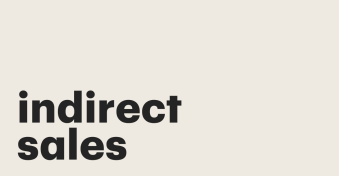Identifying the win rate and close rate of your business deals will help you pinpoint bottlenecks in your sales pipeline, which you can improve for better results.
Also, tracking sales metrics provides insight into winning strategies, deals won and lost, plus the overall performance of your sales team.
In this article, we’ll explore win rates and close rates, their differences, and how to improve these metrics for your team.
Key takeaways
- The win rate is the percentage of closed opportunities that turn into customers, while the close rate is the percentage of total opportunities pursued that are successfully converted.
- Both the win and close rates are often impacted by price, timing of purchase, value of product, competition, and market fluctuations.
- You can improve your win and close rates by identifying your target customers, crafting a winning proposal, and building lasting relationships.
- Automation software and digital document management solutions can help you increase the win and close rates.
What is the win rate
The win rate (sales win rate) is the percentage of all closed opportunities that successfully converted into completed sales (sometimes referred to as “closed wons”).
Among all the key performance indicators (KPIs), the win rate shows the efficiency of your sales strategies over some time.
That’s why sales managers and teams use this metric to assess the effectiveness of winning and closing deals.
What affects the win rate
As mentioned above, when you convert prospects into paying customers, the ratio of closed deals compared to the total number of opportunities that have been closed is the win rate.
Here are the factors that affect the win rate of any business:
- Timing of purchase: The prospect may feel it’s not yet time to invest in the product.
- Value of product: The prospective buyer doesn’t feel they need the product or recognize its value.
- Pricing: The price is higher than what the prospect is willing or able to pay.
- Competition: The prospect decides to go with a different provider.
On average, a 45 – 50% win rate shows your sales efforts are effective.
It means that for every 100 opportunities you pursued, after closing them all out, you successfully converted 20 of them into customers.
The numbers can fluctuate based on the type of industry, your target market, and the sales process involved.
Also, businesses with a longer average sales cycle may have lower win rates because it could take an entire year to close a single deal.
How to determine the win rate
The simple formula for calculating the win rate in a B2B sales funnel is as follows:

Win rate (%) = (Number of deals won / Total number of closed opportunities) x 100
Let’s say your sales reps had 150 opportunities between July and September, and the team won 35 and lost 105 (140 total). Your win rate for that period should be:
Win rate = (35 / 35+105) x 100 = (3500 / 140) = 25
Your win rate for that quarter is 25%. The remaining 10 opportunities (150-140) will be included in the close rate, which we’ll discuss next.
What is the close rate
The close rate is the percentage of all sales opportunities (closed plus ongoing) and outreach efforts that result in customer conversions.
In other words, your sales rate, often calculated as a team rather than individually, is the ratio of conversions to total leads within a period.
Businesses and marketing teams use close rates to track the performance of their advertising and marketing strategies.
What affects the close rate
The same factors that affect the win rate can impact the close rate.
As mentioned earlier, these factors include timing, product value, pricing, and competition.
If your products require significant investment, they’ll take longer to close — this will affect your conversion rate.
Besides, some products are higher in demand during a particular season than others.
You can navigate the seasonal fluctuations by adjusting your sales cycle to market trends.
How to determine the close rate
The formula for calculating the close rate: Close rate (%) = (Conversions / Total Leads) x 100
First, you need to identify the number of conversions in a specific period; for instance, bimonthly.
Then, get the number of leads obtained for that period.

Following the sales campaign mentioned earlier, let’s assume there were 150 opportunities between July and September, and the team closed 35 deals.
Close rate = (35/150) x 100 = 23%
It means that the email campaign yielded a 23% close rate, which is higher than the general average.
What are the differences between the win rate vs close rate
The win rate and close rate are similar. Some salespeople even use both metrics interchangeably.
But one thing they have in common is that they can show your sales team what’s working and what’s tanking.
These KPIs will guide future marketing decisions and gamification.
Here are the differences between the win rate and the close rate:
| Win Rate | Close Rate |
|---|---|
| Compares the number of won deals to the number of deals lost. | Compares the number of conversions to the number of sales leads. |
| (Number of deals won / won deals+lost deals) x 100 | (Conversions / Total Leads) x 100 |
| Percentage of deals that a sales team successfully closes. | Percentage of leads that result in a closed sale. |
| Offers insight into the effectiveness of the entire team. | Articulates the individual performance of salespeople in converting leads to customers. |
Why track the win/close rate
Tracking the win and close rates will provide you with actionable insights to plow back into your sales process.
It also helps you identify the most effective stages in the sales pipeline to optimize the underperforming ones.
The close rate also lets you determine the individual close rates of team members.
You can use this knowledge to reward excellent sales reps and fine-tune the sales pipeline.
How to improve the win and close rates
If your business is experiencing low sales, or you just want to win and close more deals, here’s what to do:
- Communicate a clear value proposition so clients know exactly how your business will serve them.
- Instead of designing from scratch, use document management software to create winning proposals to speed up the sales cycle.
- Be crystal clear about your ideal customer so your business can focus on only high-quality leads. This will also help with crafting your proposal or sales pitch so you’re able to focus your efforts on qualified leads.
- When crafting your pitch, focus on testimonials, case studies, and success stories from customers.
- Let the numbers speak for you. Use data points, ROI, and verifiable metrics to show why your offer is best-in-class.
- Build and nurture relationships with new and existing customers. While onboarding new clients, you must follow up on returning customers.
- Be responsive, empathetic, and honest with customers and prospective clients.
- Use CRM platforms like Salesforce to automate all customer communications.
Close more deals with PandaDoc
The win rate and close rate determine the effectiveness of your sales strategy.
They also help businesses and salespeople determine the most effective ways of boosting revenue and converting qualified leads.
PandaDoc is a digital solution that combines sales automation and document management tools geared toward optimizing your sales process.
With PandaDoc, you can access a rich library of proposal templates with features to edit, design, and manage in minutes.
Upper management and decision-makers in your organization can also monitor customer relationships and sales pipelines by tracking user activity on PandaDoc.
Over 30k of our customers worldwide integrate CRMs and ERPs with PandaDoc in order to unify all customer data in a single location.
To find out how PandaDoc can help you write winning sales proposals that will land and close more deals, book a demo right away.


